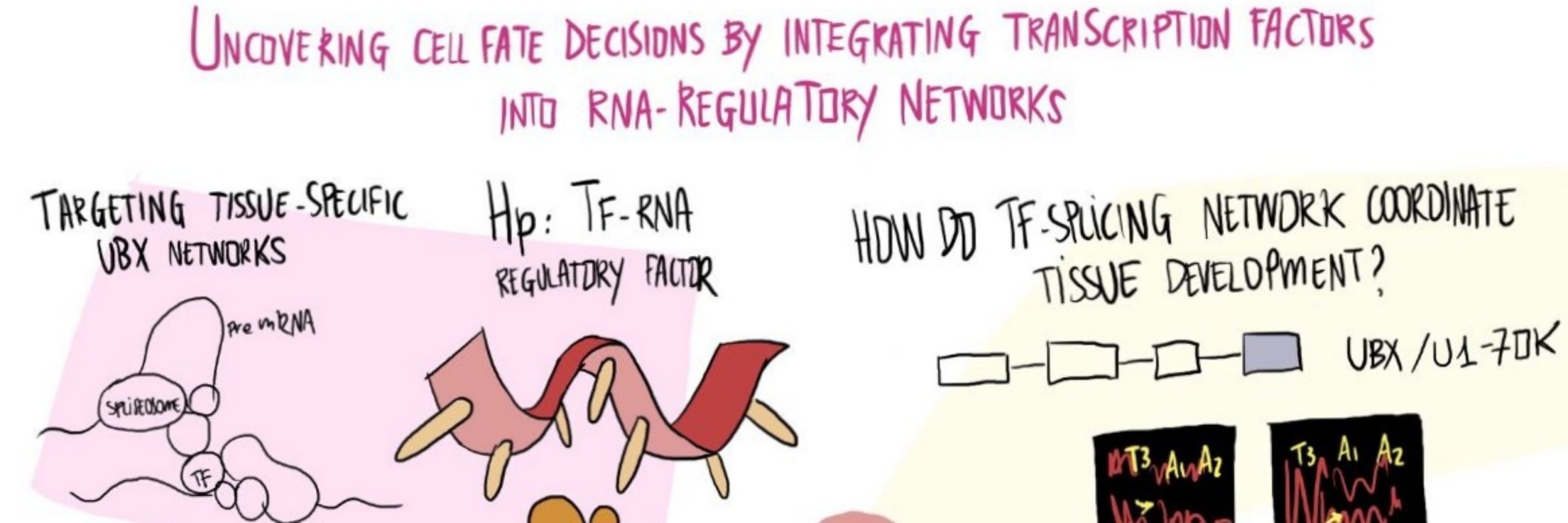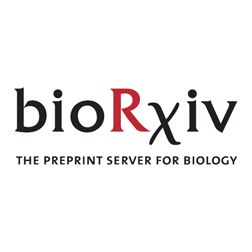
https://www.igmm.cnrs.fr/en/team/integrative-rna-networks-in-development/

We uncover how the Hox TF Ultrabithorax controls alternative splicing to shape muscle patterning and homeotic identity 🧬 @igmm-montpel.bsky.social
🔗 doi.org/10.1093/nar/...
'Some estimates are that up to 20% of the entire proteome can bind RNA and moreover that about 20% of all known protein complexes have an RNA component in them and you really have to think about how to deal with such large figures.'

'Some estimates are that up to 20% of the entire proteome can bind RNA and moreover that about 20% of all known protein complexes have an RNA component in them and you really have to think about how to deal with such large figures.'
GAPDH is often slandered as a 'housekeeping' protein, and its abundance varies significantly across human tissues.
How do you define a 'housekeeping' protein ?

GAPDH is often slandered as a 'housekeeping' protein, and its abundance varies significantly across human tissues.
How do you define a 'housekeeping' protein ?
Check out our updated website!
Details on next year's conference will be posted there soon!
fly-jedi.org
Check out our updated website!
Details on next year's conference will be posted there soon!
fly-jedi.org

Tracking 5 dyes simultaneously Kavan Gor @embl.org tracks nascent #RNA folding during #ribosome assembly to correlate structural with functional information on single RNA molecules!
Check it out!
www.biorxiv.org/content/10.1...

Tracking 5 dyes simultaneously Kavan Gor @embl.org tracks nascent #RNA folding during #ribosome assembly to correlate structural with functional information on single RNA molecules!
Check it out!
www.biorxiv.org/content/10.1...

The discovery shows that even insects can share affective states, tracing the roots of affect and social cognition deep into evolution. Learn more: https://scim.ag/4oblMQq

The discovery shows that even insects can share affective states, tracing the roots of affect and social cognition deep into evolution. Learn more: https://scim.ag/4oblMQq
As a PhD student, I focused on the growth-rate transcriptional regulation in yeast.
Now, ~ 20 years later, we report protein regulation scaling with the growth rates of single cells in mammalian tissues.
www.biorxiv.org/content/10.1...

As a PhD student, I focused on the growth-rate transcriptional regulation in yeast.
Now, ~ 20 years later, we report protein regulation scaling with the growth rates of single cells in mammalian tissues.
www.biorxiv.org/content/10.1...

Project: Hox factors beyond DNA: how RNA binding links molecules to body-plan evolution.
Start: early 2026
Apply: CV+motivation
#Master2 #Internship #Montpellier #RNA #Hox #EvoDevo #Drosophila #Bat
Project: Hox factors beyond DNA: how RNA binding links molecules to body-plan evolution.
Start: early 2026
Apply: CV+motivation
#Master2 #Internship #Montpellier #RNA #Hox #EvoDevo #Drosophila #Bat
#CRISPR #Drosophila
www.biorxiv.org/content/10.1...

#CRISPR #Drosophila
www.biorxiv.org/content/10.1...
We express enormous gratitude to the people, labs, groups, and foundations who have already helped us.
#FlyBase #Drosophila

We express enormous gratitude to the people, labs, groups, and foundations who have already helped us.
#FlyBase #Drosophila





as we are self-organizing using the #EDRC as a nucleator we decided it is time for a JEDI database to boost our network! If you identify as a JEDI, please contact us here or send a mail to katja.rust@uni-marburg.de to be added to our database.
#Drosophila
@fly-eds.bsky.social
as we are self-organizing using the #EDRC as a nucleator we decided it is time for a JEDI database to boost our network! If you identify as a JEDI, please contact us here or send a mail to katja.rust@uni-marburg.de to be added to our database.
#Drosophila
@fly-eds.bsky.social









@XiangyiDing
figured out why muscular dystrophy mutations cause such widespread cellular chaos. The answer wasn't what we expected - and it changes how we think about the disease. Thread🧵 (1/6). www.biorxiv.org/content/10.1...
@XiangyiDing
figured out why muscular dystrophy mutations cause such widespread cellular chaos. The answer wasn't what we expected - and it changes how we think about the disease. Thread🧵 (1/6). www.biorxiv.org/content/10.1...







